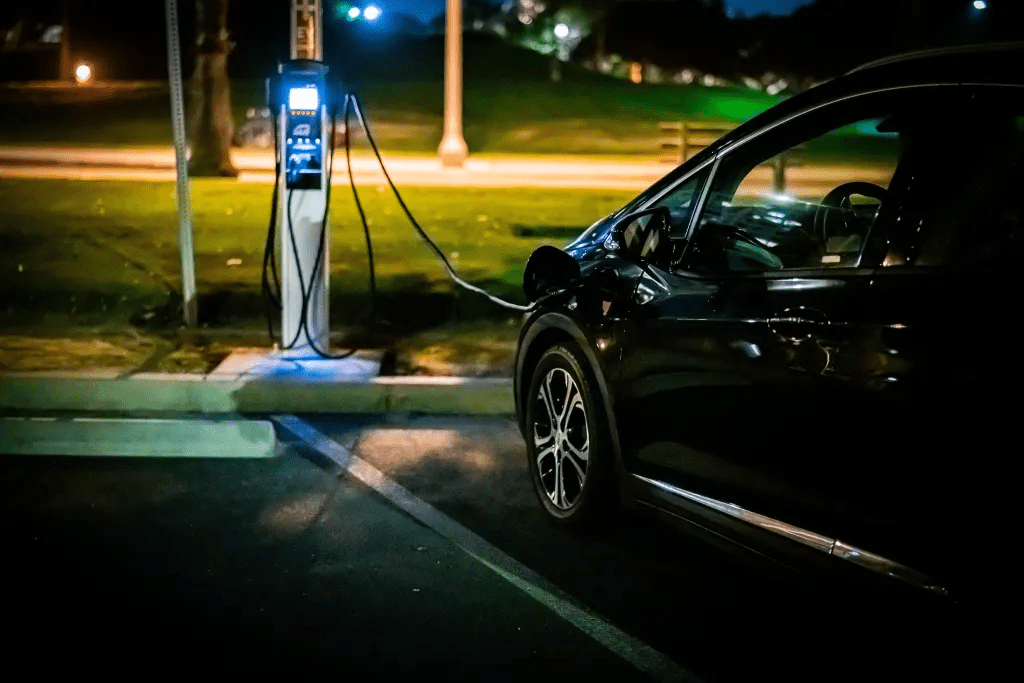Nevada’s rural topography is not ideal for technological expansion. Establishing an integrated electric vehicle (EV) charging system in the state is challenging. However, significant investments are helping this idea become a reality. Nevada is one of the leading states for EV investment.
According to the U.S. Electric Vehicle Manufacturing Investments and Jobs study conducted by WSP and the EDF, $13.3 billion has been invested into Nevada’s EV sector, ranking fourth out of 15 states on the list and creating 12,400 jobs. Two areas The Silver State is focused on are bolstering the charging highway corridor and replacing internal combustion fleet vehicles with zero-emission alternatives.
Electric Highways
Like North Carolina, Nevada benefits from the Volkswagen Clean Air Act Civil Settlement, an Environmental Protection Agency (EPA) civil enforcement case against Volkswagen (VW) AG. The funds are allocated to fleet vehicles from 2009 or older to transition to zero-emission models. Funds will vary based on the vehicles, fuel type, and applicant, with weight limits set to reduce emissions from idling.
As part of the National Electric Vehicle Infrastructure (NEVI) strategy, money is going toward more electric charging stations. The guidelines for future sites were approved on Sept. 14, 2022. Nevada’s Department of Transportation will use federal funds to build out Alternative Fuel Corridors along interstates and other highways. Each station must comply with government mandates, such as universal charging.

A station will be located every 50 miles or less, and all must be within one mile of the interstate. Around $300 million was spent in 2022 on charging and fueling infrastructure, with the total expected to reach $700 million by 2026. It’s estimated 2023 will have around $400 million invested into the state EV network, creating thousands of jobs across Nevada.
The Nevada Department of Transportation will receive $38 million in federal funds over the next five years to deploy this infrastructure across Alternative Fuel Corridors. This is a crucial step in creating the national EV charging network.
The Nevada Electric Highway is another part of the state’s EV investment and development. The plan was to set up charging stations across U.S. Highway 95 from Reno to Las Vegas. According to the Nevada Governor’s Office of Energy, the first phase of the highway was completed.
The second phase, which expanded the number of charging stations across I-15, I-180, U.S. 93, U.S. 50, and the remainder of U.S. 95, was slated to be finished by June 2022. It emphasized direct current chargers, with at least two per station along these highways.
Fleet Adaptations
Commercial fleets are another focus for Nevada’s electrification journey. Rebates are being offered to charging stations installed at participating businesses. A company can install two to 10 ports and receive as much as $10,000 per port and up to 100% of project costs covered by state or federal funds, depending on the station site.
A direct current fast chargers rebate covers up to 50% of installation costs. Low-income dwellings, public charging stations, and government buildings are some locations that qualify for these rebates. The minimum is two stations per business or home, but direct current chargers can have a maximum of five stations.

School buses also represent an investment opportunity for Nevada state and federal government officials. The state wants more fleets to switch to electric power and is willing to support this initiative NV Energy offers public school districts rebates of up to 75% of expected costs for purchasing electric school buses and similar vehicles. Not only does this save a lot on maintenance costs, but it also results in around 54,000 pounds of carbon dioxide emissions being reduced from the atmosphere per year.
Across the board, Nevada is setting standards for zero-emission and low-emission vehicle sales. Any car from 2004 or older must meet new emission standards and new cars and any light- or heavy-duty vehicles must do so as well. By 2025, 22% of automobile sales must be electric or hybrid.
The $13.3 billion invested toward Nevada’s EV future will propel the state and the country closer to its electrification and innovation goals. With 2035 approaching quickly, more investments continue to help American future-proof the economy, compete internationally and support sustainability goals for a more resilient nation.





